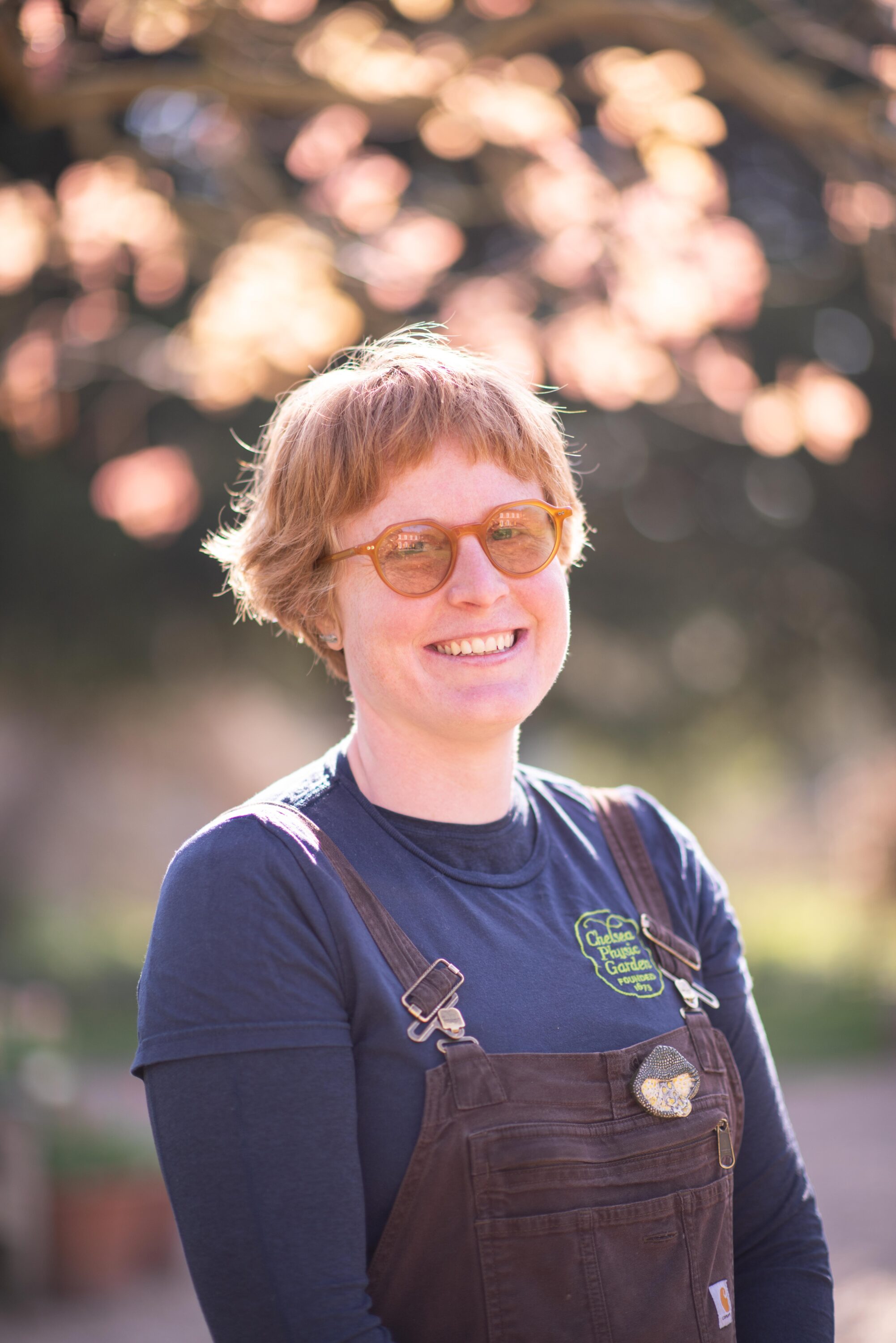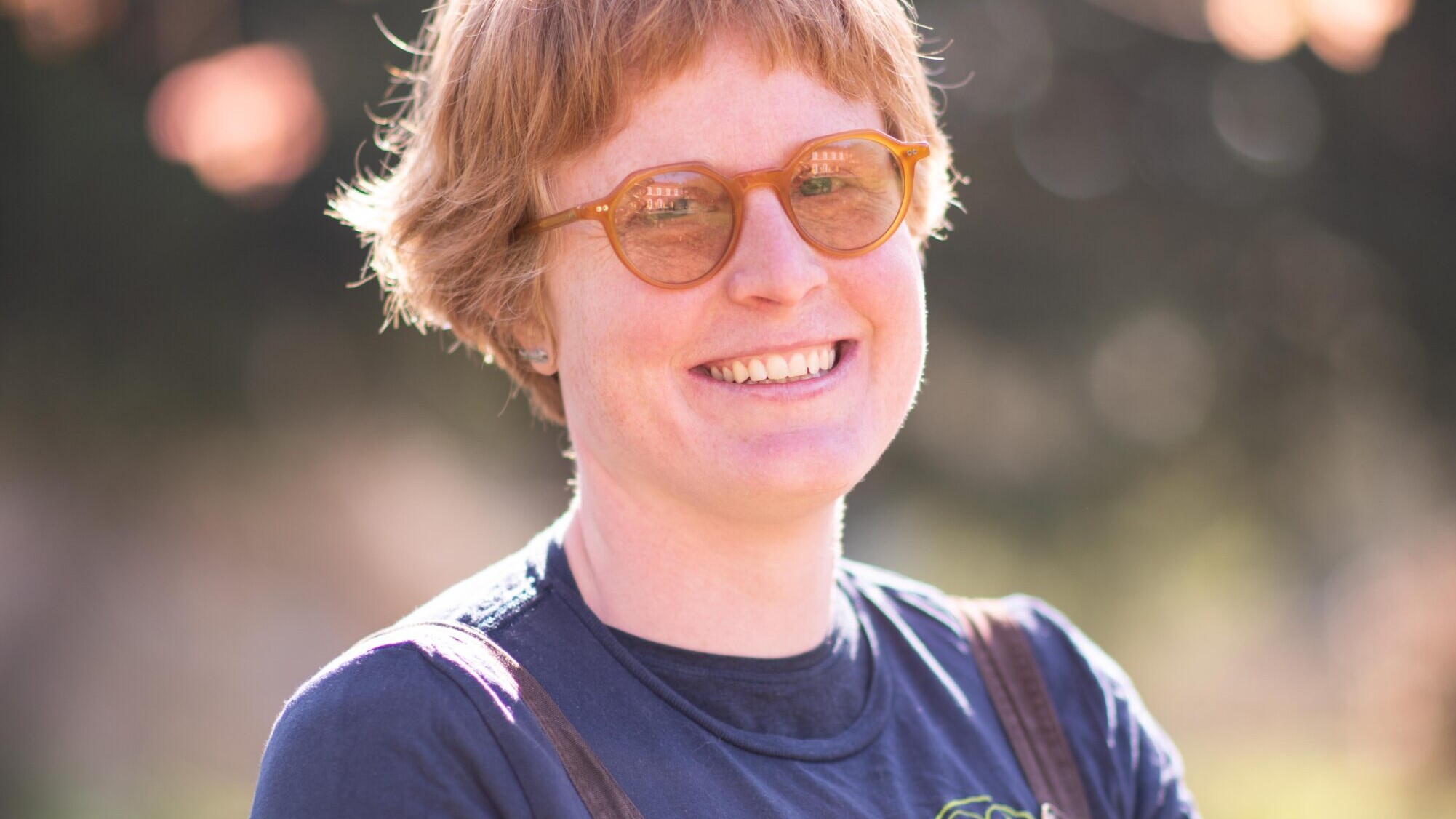What is the Head of Plant Collections?
Head of Plant Collections is a Senior Leadership role in a modern botanic garden. It encompasses a lot of what ‘Head Gardeners’ might do – so I still get to turn the compost heaps and pull the weeds, but I also find myself writing policies to manage our Collection of Living Plants, Seed Bank and Herbaria in line with best practices. My work includes training the team, managing mini projects and day to day operations, future planning and curating our collection of over 4,500 different taxa (types of plants). Our 350 plus year-old botanic garden is like a library of plants, but instead of an ISBN number they have an accession number. I manage the curation of records on the database and develop this library for the benefit of the Garden’s charitable endeavours.
What was your introduction to the world of horticulture?
When I was a child, I was often given washing up as a chore, rather than mowing the lawn – that was for boys. In the holidays, I loved spending time in the garden with my grandparents. Once my grandpa let me have a go at mowing and then followed me around with scissors after I’d finished. I have fond memories of the pond exploding with frogs at the bottom of their garden, as well as the swish of the willow tree. As a young person, I didn’t know gardening could be a career, or that I could spend my life outside and ended up doing a degree and working in local independent organisations in Bristol such as an organic wholefood wholesaler and the local currency.

I hated being in the office and felt growing food was the most radical thing I could do to reduce my impact on the planet, so I took up growing vegetables with some flatmates in Fishponds. We were all very new to it and suffered many early losses, a weak squash tunnel collapsed due to our rubbish weaving skills and our cheap greenhouse snapped in half in a storm. However, I got the bug and saw improvements in my physical & mental health. I wanted to share these benefits of gardening with others less privileged than me and volunteered at well-being & local food growing projects and ended up as the Horticultural Training Officer at St Werburgh’s City Farm. I got an allotment and gardened in a dress on heavy clay, cycling my bike trailer up Fishponds hill loaded with vegetable seedlings. I fully immersed myself in the Bristol Local Food Movement, growing veggies without pesticides and without digging. I took several courses through Bristol Food Producers and with Charles Dowding – soil was my queen. Delving further into the healing power of plants and the outdoor world, I did a one-year course with Rhizome Clinic on Wild Medicine, covering the medicinal ecology of plants in the southwest. I was hooked on all things plants, wellbeing and biodiversity, managing to make it my full-time career.
How was your experience at Royal Botanic Gardens, Kew and The Birmingham Botanical Gardens?
I had completed my Royal Horticultural Society Level 3 when I entered the prestigious Kew Diploma. I quickly failed my first identification test – around twenty jars of specimens from Kew’s plant collection with no prior notification of what would be included, full Latin to be given – and none of them were a squash or a British native medicinal plant! The pandemic ensued in my first year, where I was to be found in the arboretum nursery, trying to propagate tricky Juniperus and Indigofera, grafting conifers, or cycling student plot grown vegetables to the local food bank in Richmond. I would spend hours upon hours in the collections at Kew, documenting them with photography in my spare time.
I soon found my enthusiasm for plant life soon had me reeling off Latin names without a second thought. I won a few diploma prizes early on, including my funded travel scholarship to South Africa, which found me running round Table Mountain with locals and collecting seed with the Kirstenbosch seed team and witnessing the Conophytum poaching crises first hand. I graduated top of my year, winning ten prizes, including for my dissertation on Pelargonium subgeneric section Otidia (Pelargonium that look like cupboard potatoes and live off just over a shot glass of rainwater per year). On graduating, I started to get itchy feet in the Temperate House, naming a new species from the collection in my spare time, with international partners.
I went in for the role of at Birmingham, as a punt, just to get my face in front of the interview panel. To my shock, I got the job. During that time, I rebuilt the horticultural team, and we replanted much of the grass garden, seeded several meadows (native and ornamental), brought back the Giant waterlily after a long period of remission, replanted the car park with drought tolerant plants, mapped the living collection, and accredited the botanic garden with the BGCI. I wrote a living collection strategy and significantly contributed to the design of the glasshouse restoration. When I developed a Cyclamen traineeship, and we put the National Cyclamen collection on display for the first time, the local media came to watch. This is just a portion of what the team and I achieved during my short time there. When Matt Pottage (Trustee of Chelsea Physic Garden) summed up my cover letter for Chelsea, he said ‘You did all of that in eighteen months? How?’.
What excites you about working at Chelsea Physic Garden?
Chelsea has been on my radar as a dream garden to work in since I met the very intimidatingly talented diploma students that had passed through Nell’s (Nell Jones, previous Head of Plant Collections) guidance here. I spent a year learning about medicinal plants before I even knew Chelsea Physic Garden existed, I am passionate about the relationship between plants and the wellbeing of humans and the planet. I fell in love with the site when I visited it in the winter of 2021 – that Christmas lockdown – wandering around with my girlfriend looking at the Leucojum. Chelsea Physic Garden aligns with several of my professional and personal interests – my interest in plants speaks directly to the Garden’s mission of connecting people to plants that heal. From the Medicinal plants represented in the Medicinal Quadrant, to the historic Pelargonium collection, and plant Taxonomy as demonstrated in the Dicot Order Beds. Whether it’s the healing power of good nutrition from well grown heritage crops on min-till soil or the benefit of being in nature for one’s mind or literally making lime flower (Tilia cordata) tea for anxiety, I’m excited to be able to enrich those practices in the Garden.
The plant collection here is also a boon to work with. Sue Medway, MBE, Director, sometimes catches me in the garden out of hours and I must reassure her I am not working, just happily snapping photos of plants for my own enjoyment. The Garden gives us an opportunity to play with different plants on the edge of their known cultivation limits. The Garden’s microclimate is a good plot of land to experiment on. The dearth of rain here and the warm double jacket conferred by the urban heat island effect, surrounding buildings and the Garden’s walls, means we can grow and flower things outside here that down the road at Kew would get too exposed and need protection in the Temperate House. The microclimate does not come without challenges and tough choices will need to be made to safeguard our oasis in central London for future generations.
The team at Chelsea is fantastic, every single person in this organisation is engaged in the Garden and that makes my job much easier. Since I’ve been here even the Commercial team have lent a hand manuring the beds and the Development Director helped to plant out the Miller Beds. The Horticultural team here are very motivated by ecological and sustainable gardening principles and this sows together my pre-Kew and post-Kew horticultural practices. I am looking forward to combining our knowledge of seed from our seed bank, climate resilient planting and pollinator friendly practices into something that the public can access and contribute to London remaining the green city that I love.
Is there anything you’re looking forward to coming up?
I’m always looking forward to the next time it rains in Chelsea, we were indulged with 33 mm this weekend.
I am looking forward to launching and delivering our new strategy in the Garden, developing planting schemes that are climate resilient and training the next generation of horticulturists in our ecologically sound practices. I hope to build on our 350 years of horticultural knowledge by making data informed decisions to advance the garden in a way that stays true to its rich heritage.

